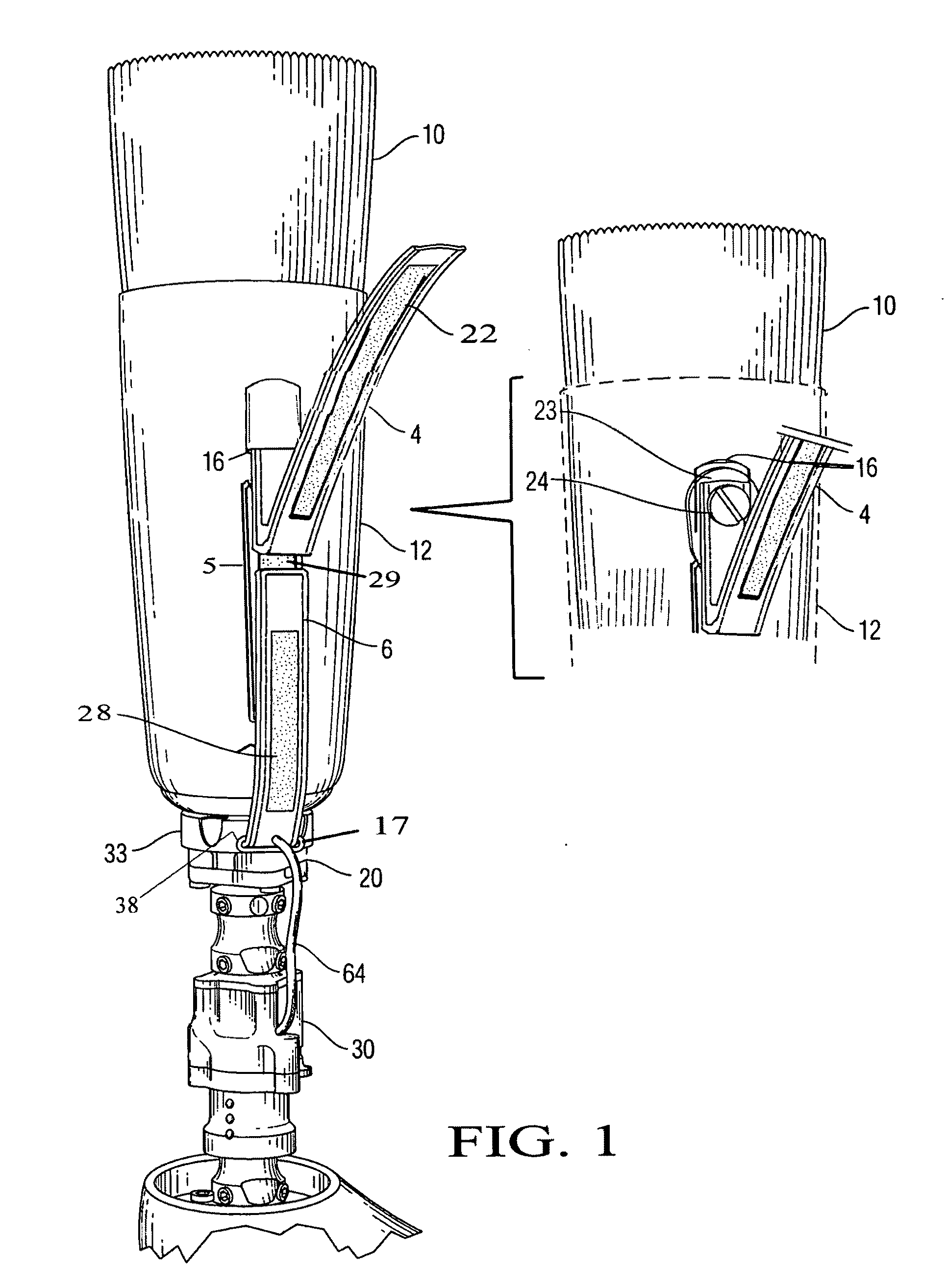Prosthetic attachment system with low profile attachment pad
a technology of prosthetic attachment and attachment pad, which is applied in the field of prosthetics, can solve the problems of radial pressure slipping of the limb out of the socket, extraneous pivoting, rotation and shift during ambulation, and add to discomfort, and achieve the effect of easy adjustment of the prosthesis to compensa
- Summary
- Abstract
- Description
- Claims
- Application Information
AI Technical Summary
Benefits of technology
Problems solved by technology
Method used
Image
Examples
Embodiment Construction
[0025]The present invention is a prosthetic attachment system for transfemoral and transtibial (above-knee and below-knee) amputees.
[0026]FIG. 1 is a perspective illustration of the prosthetic anchoring system 2 according to one embodiment of the present invention with first strap 4 unattached.
[0027]The anchoring system 2 generally includes a commercially-available liner 10 for enveloping the amputee's residual limb. Liner 10 is largely a standard transfemoral or transtibial suspension liner designed for amputees with amputations along the length of the tibia or femur. There are a variety of commercially-available suspension liners which will suffice, provided that they afford good suspension independent of volume fluctuations and provide a comfortable anatomical fit. These liners are typically formed of silicone or a gel blend with a fabric shell, and they may be equipped with a threaded socket assembly at the bottom for screw-insertion of a pin such as utilized in prior art pin se...
PUM
 Login to View More
Login to View More Abstract
Description
Claims
Application Information
 Login to View More
Login to View More - R&D
- Intellectual Property
- Life Sciences
- Materials
- Tech Scout
- Unparalleled Data Quality
- Higher Quality Content
- 60% Fewer Hallucinations
Browse by: Latest US Patents, China's latest patents, Technical Efficacy Thesaurus, Application Domain, Technology Topic, Popular Technical Reports.
© 2025 PatSnap. All rights reserved.Legal|Privacy policy|Modern Slavery Act Transparency Statement|Sitemap|About US| Contact US: help@patsnap.com



